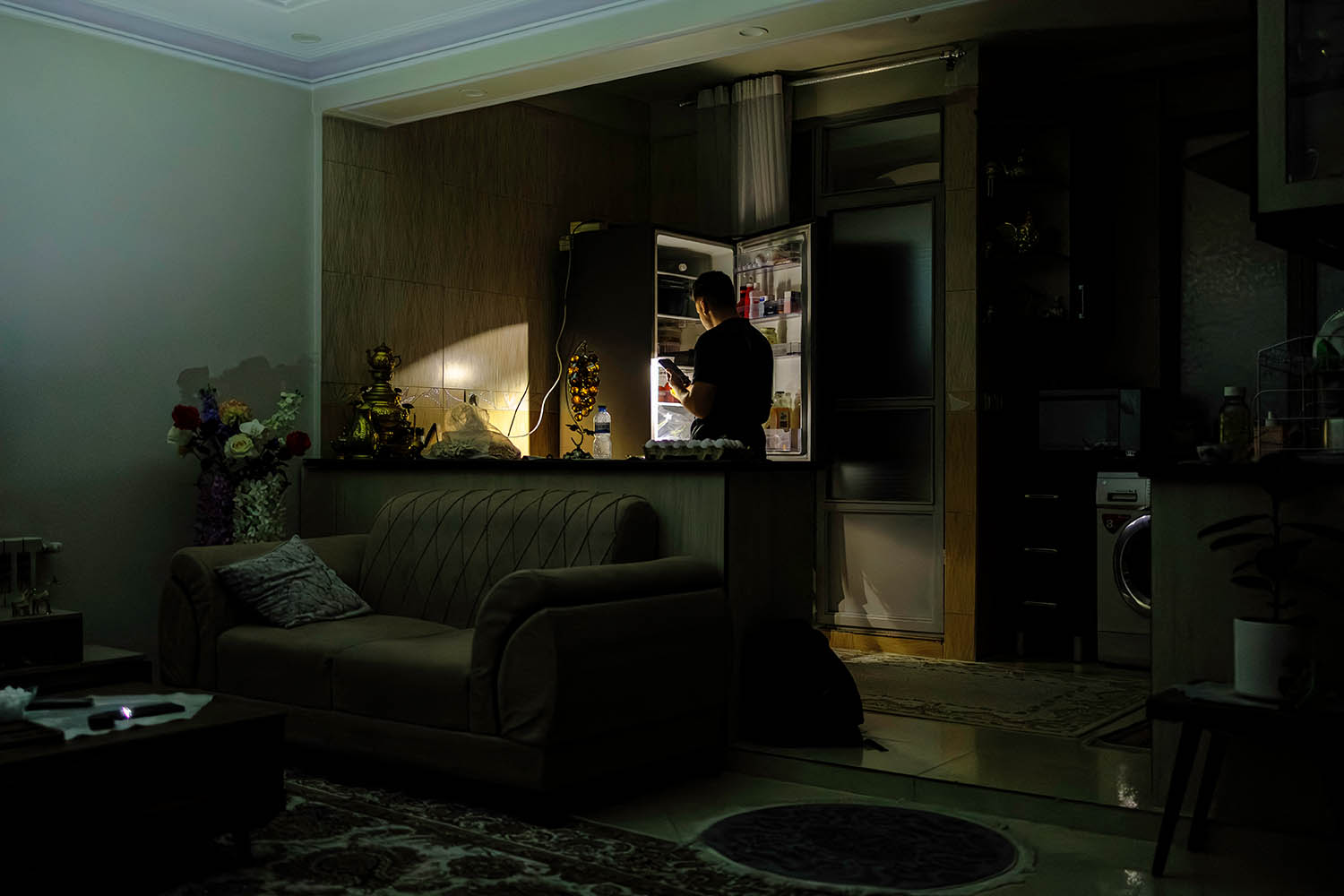Lake Urmia in Iran was once the second-largest saltwater lake in the world. The former beloved tourist spot is now miles of salt-encrusted marshland ringed by ghost towns of hotels – and by the end of this summer experts fear it will be completely dry.
A record drought and a nationwide water crisis have been compounded by an electricity shortage in Iran, heightened by the hot summer months where temperatures can easily reach 40C. Government buildings across Tehran now regularly shut down for days to conserve energy, while office workers in the capital complain at being forced to endure the heat without air conditioning.
The punishing energy crisis has pushed small but vocal groups of disgruntled citizens to demonstrate. In the coastal town of Babolsar, people gathered outside a power station to protest against the constant outages, while video circulated on social media showing medics inside the local hospital fanning themselves in the sweltering heat and total darkness of a chemotherapy ward without power.
Angry citizens as well as experts blame government mismanagement: video from the northern city of Rasht showed a small group chanting “water, electricity, life – these are our indisputable rights” and “death to incompetence” as police massed nearby.
Ice-cream seller Hamid in the northern town of Khomam bemoaned the outages ruining his business. “We managed to tolerate two hours of cuts each day – but then they increased to twice a day, so I had no electricity for four hours in my shop. The ice cream melted, and we were melting from the heat ourselves,” he said. He joined protests outside the local governor’s office and was relieved to see the power cuts diminished afterwards.
The energy crisis has fuelled public resentment as Iranians attempt to recover from 12 days of Israeli and American bombings earlier this summer targeting the country’s nuclear programme. The wave of strikes killed almost 1,100 people in Iran, while Iranian strikes in response killed 28 in Israel. Nuclear power contributes little to Iran’s energy supply – at most 2% of its electricity is drawn from a single nuclear plant, staffed and supported by Tehran’s Russian allies.
The drought is now such a problem that the Iranian president, Masoud Pezeshkian, has begun sounding the alarm in cabinet meetings, although the government has been slow to offer solutions. “We are in a serious and unimaginable crisis,” Pezeshkian told officials last week. He scoffed at a message from Israel’s prime minister, Benjamin Netanyahu, who told Iranians to rise up against their government over the energy crisis and promised Israeli technicians would arrive if they succeeded in overthrowing the regime. “A mirage, nothing more!” Pezeshkian posted on X.
Mohammad Mohebbi, an engineer working in Iran’s electricity sector for decades, despaired at government failures he says are the root of the issue. Decades of sanctions have hampered the upkeep of power plants, the electricity grid and water systems, but Mohebbi said these have only compounded the state’s mistakes. “The deepest, most significant reason for these shortages is the uncontrolled, systemic corruption and mismanagement,” he said. “This is a country that has some of the largest natural gas and oil resources in the world. Not only should it not have this energy crisis, but it should be able to export to the rest of the world.”
Mohebbi estimates that up to 5% of Iran’s ageing and inefficient national grid is taken up by the state – particularly the Islamic Revolutionary Guard Corps – mining cryptocurrency to subvert international sanctions. Authorities also built thirsty steel plants in already dry cities like Isfahan, constructed dams and pushed farmers to grow water-intensive crops in a bid for self-sufficiency.
Environmental expert Kaveh Madani described Iran as living in “water bankruptcy mode”, where decades of government missteps, such as the self-sufficiency push, have maxed out previously abundant resources.
“Mismanagement is the cause. Climate change and drought have a role as catalysts, but they are not the cause,” he said. Madani spoke from exile: previously hailed as a bright young mind returning to Iran to help combat water shortages at the environment ministry, he was detained in a sweep of environmental experts in 2018.
Arresting experts has done little to temper the problem. Naser, a farmer in Khorasan province – whose name has been changed – complained that the government has all but abandoned farmers like him. “The government is doing nothing,” he said. “Nothing they are doing shows any kind of plan at all.”
Switching to less water-intensive crops proved difficult, and Naser is among a growing number considering giving up farming altogether. “There is just no water left,” he said. He remains sceptical of government promises to reduce power cuts if he switched to solar power generation, “because the government is using the electricity for Bitcoin”.
Iranian citizens who felt they were left to face the Israeli assault alone said they were now struggling after the lack of water and power dealt a fresh blow to their daily lives.
“The government disappointed us so much in the past, I guess we now have low expectations,” said Atiyeh, a life coach in the city of Yazd. “We at least expected the bare minimum of security. This was how they kept us busy for so many years. Then they brought a war inside our borders.”
This sense of futility has pushed her to focus instead on adapting to the daily challenge of the shortages, making sure her children can get to classes or work in time to avoid cuts. The lack of electricity has curbed their social schedule, fearing guests might get stuck in the lift or garage as they try to reach their apartment during a blackout.
Photograph by AFP via Getty

